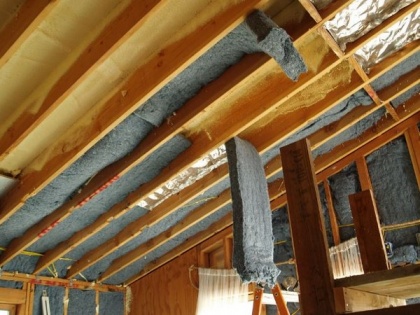More harm than good caused by climate-friendly foam building insulation
By ANI | Published: February 23, 2021 04:12 PM2021-02-23T16:12:37+5:302021-02-23T16:20:08+5:30
Researchers during a recent study discovered that in "eco-friendly" foam plastic building insulation, the use of the polymeric flame retardant PolyFR may be harmful to human health and the environment.

More harm than good caused by climate-friendly foam building insulation
Researchers during a recent study discovered that in "eco-friendly" foam plastic building insulation, the use of the polymeric flame retardant PolyFR may be harmful to human health and the environment.
According to a new study published in 'Environmental Science and Technology', the authors' analysis identifies several points during the lifecycle of foam insulation that may expose workers, communities, and ecosystems to PolyFR and its potentially toxic breakdown products.
With the climate crisis fuelling demand for energy-efficient insulation, the production of PolyFR is increasing rapidly. That's because this flame retardant is added to all foam plastic building insulation in North America to comply with flammability codes, replacing the flame retardant hexabromocyclododecane that has been globally phased out due to its toxicity and persistence. PolyFR is commonly assumed to be safe. However, the authors question that assumption.
The presumed safety of PolyFR hinges on the claim that as a large molecule called a polymer, it has few opportunities for release from foam insulation. But the authors' analysis shows that in fact, PolyFR in building insulation has significant opportunities for release into the environment during manufacturing, installation, and disposal of foam insulation. Once released, the PolyFR may break down into harmful chemicals that can end up in people and ecosystems.
"Since so much PolyFR is being used and so little is known about its release into the environment, we need to have realistic assessments of the potential for PolyFR across its life cycle to harm human and environmental health," said Miriam Diamond, Professor at the University of Toronto and corresponding author of the study.
PolyFR is a polymer made from butadiene and styrene, which are both carcinogens. Bromine is added making it a brominated flame retardant--such flame retardants studied in the past were found to be toxic and many have been fazed out of use.
A greater understanding of the potential for health harm associated with the increasing production of PolyFR, as well as its eventual breakdown and disposal, is needed to protect workers, fenceline communities near waste disposal sites, and others exposed throughout this flame retardant's lifecycle.
Importantly, alternative insulation materials already exist which do not require the use of potentially hazardous flame retardants. Inherently flame-resistant mineral fibres, such as glass wool or stone wool, can be used instead. Also, the fire safety benefit of adding flame retardants should be established before such chemicals are used.
"Making buildings more energy-efficient is a key part of tackling the climate crisis," said co-author Arlene Blum, Executive Director of the Green Science Policy Institute. "But we need to be careful not to create new health and environmental problems along the way. A 'green building' with potentially hazardous insulation isn't a green building at all."
( With inputs from ANI )
Disclaimer: This post has been auto-published from an agency feed without any modifications to the text and has not been reviewed by an editor
Open in app